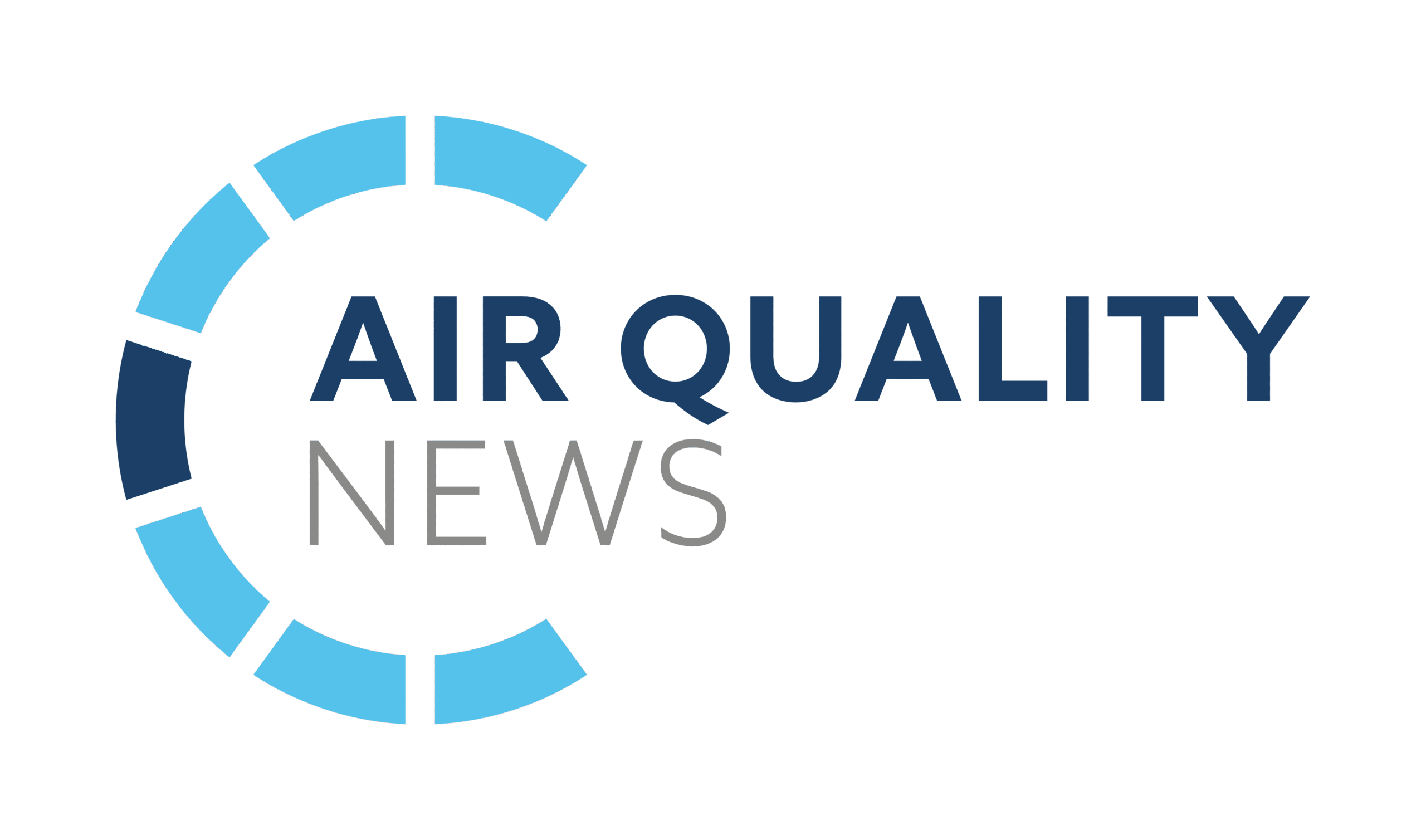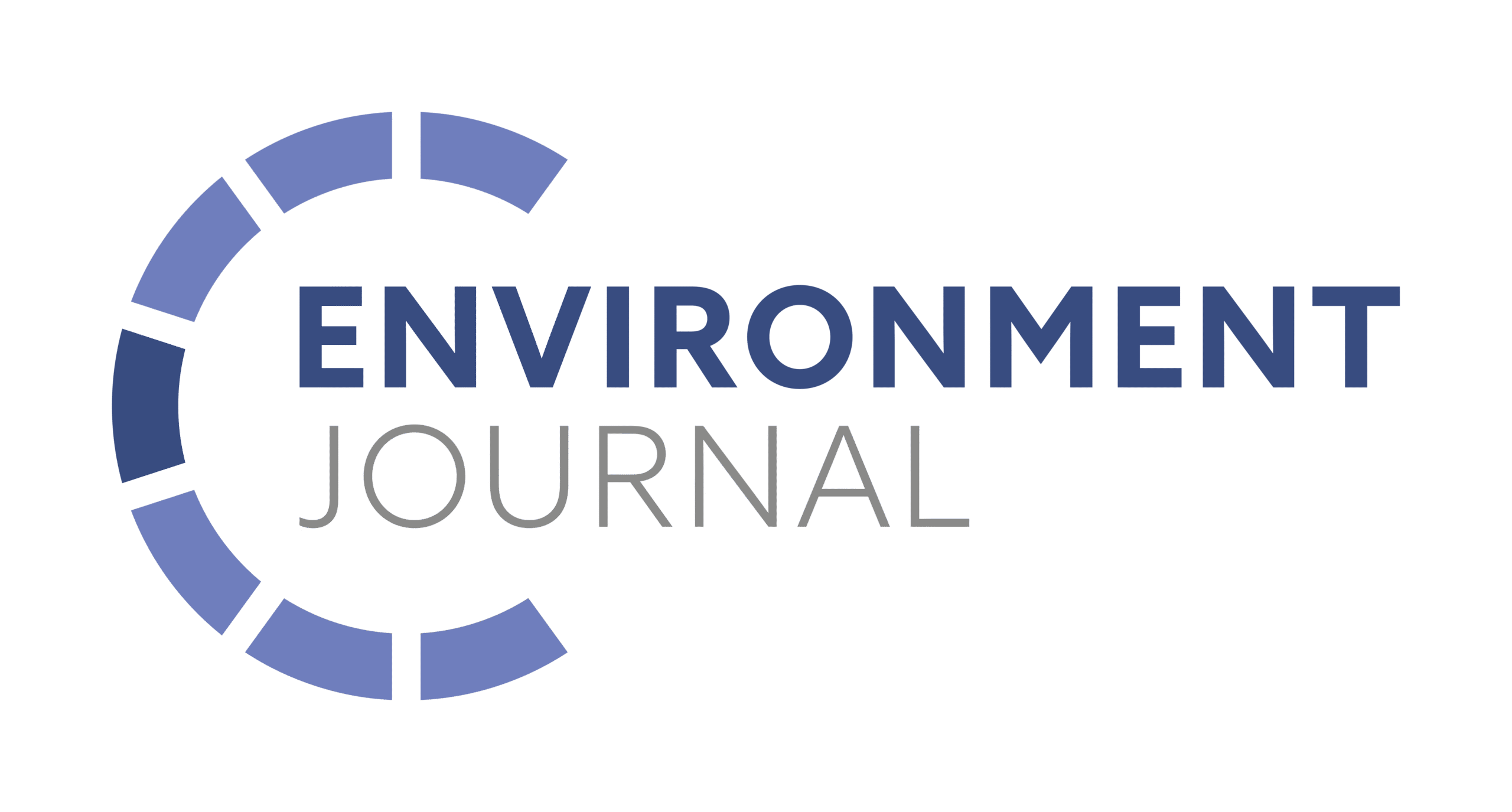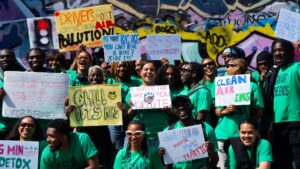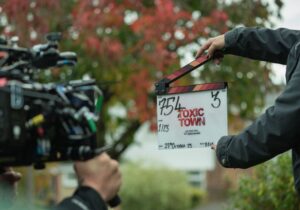On Tuesday 4th November we hosted our sixth National Air Quality Conference in London, returning to Prospero House following its successful debut there in 2024.
It’s safe to say everyone agreed that the venue was spot on. You can see Prospero House the moment you step out of Borough Tube Station, which is a lifesaver for anyone tackling London’s morning commute. And kicking off the day with a carrot and turmeric smoothie certainly woke everyone up faster than a coffee.
As ever, Cllr Beverely Nielsen proved to be an outstanding host. She opened the conference with a series of sobering statistics, a timely reminder of why we had gathered – to push for cleaner air.
Commending the efforts of our speakers, she said: ‘The work you’re doing in the air quality field must be congratulated for making a difference.’

Our first speaker was Nick Smith, Head of the UK portfolio at the Clean Air Fund. Nick explained the work of the Breath Cities – a programme delivered by Clean Air Fund, Bloomberg Philanthropies and C40 cities – to improve air quality in what has grown to be 14 cities across the planet.
Breathe Cities originated in London but Nick talked about their work in Sofia and Accra to illustrate the different challenges faced by the programme from city to city. One of The Ghanaian capital’s primary air quality problems is waste burning, for example.
Breathe Cities aims to work with cities at governmental level using four pillars of intervention to improve access to data, increase public awareness and to provide technical policy assistance to improve the city’s capacity to act on air pollution.
Nick then introduced Kayla Schulte from the Environmental Research Group at Imperial. Kayla talked about Breathe London which began as a pilot scheme in 2018. Under the scheme, 100 low-cost air quality sensors were distributed among the community, with the recipients able to site them in areas they felt to be of concern in terms of air quality.
Earlier this year, Sadiq Khan and Bloomberg Philanthropies, announced a joint a £2.8m investment to fund the next phase of the Breathe London programme, securing its existence beyond 2026.

Next to speak was Dr. Abi Whitehouse, a specialist in children’s environmental health at Queen Mary University of London and an Honorary Paediatric Respiratory Consultant. She spoke about the harmful effects of air pollution on children, particularly those with underlying respiratory issues.
‘I was not taught how to deal with air pollution issues when studying to become a doctor,’ Abi said while introducing her talk, however we’re certainly glad she pays attention to them. She began by outlining that exposure to air pollution is the second leading risk factor for death in children aged under five, both globally and in the UK.
While air pollution is significant, Abi emphasised the importance of improving how these risks are communicated. She noted that PM2.5 levels are particularly high in Tower Hamlets, yet awareness of this remains low. Abi also drew attention to issue of indoor air pollution, specifically damp and mouldy homes – a concern brought to our attention following the recent introduction of Awaab’s Law.
Abi explained that while improving housing conditions can be long and costly, better communication between families and professionals could make a difference. She cited the tragic case of Awaab Ishak, where a clinician’s warning letter about the risks of his home was lost until after he had passed away.
Supported by the charity Barts, Abi’s research team conducts environmental and health assessments to better understand people’s living conditions. She concluded her talk by urging GPs to be proactive: ‘They’re more than happy to tell people to stop smoking and they should be more than happy to ask questions about people’s living situation and whether they’re exposed to poor air quality.’

After a coffee break in which the delegates could chat with our exhibitors and discover the latest technologies in the air quality field, we reconvened with our discussion panel, which this year would exclusively talk about the air quality concerns of domestic wood-burning and commercial cooking.
In traditional fashion, Beverley asked each panel member to explain the work they haver been involved with, relevant to the days topics, before questions from the floor.
Chloe Coules leads Global Action Plan’s public awareness campaign Clean Air Night, which raises awareness of the health impacts of wood burning each winter. She is also working on the transition to electric cooking in the UK, including a recent pilot project which saw social housing properties in Manchester retrofitted from gas to induction hobs.
Chloe explained that GAP’s preference is a phased approach on tackling domestic wood burning alongside a Government-led public health campaign. She also called for an improved legal framework to close loopholes exploited by ‘ecostoves’ and for smoke control areas to based around air pollution rather than smoke. As someone said later in the day, you can’t see smoke coming out of a chimney at night but you can measure air quality.
Dr Laura Horsfall, from the University College London, made the news earlier this year when her research enabled her to create interactive maps to measure the concentration of wood burners in London. She explained how the results showed that wealthy areas generate the most smoke.
She also talked about research to measure the effects of wood burning on the people who live with them. She explained that while it’s harder to show a health impact on ‘healthy, wealthy people’ than on those already suffering ill health, her work did exactly that.
Westminster City Council’s Laura Brightwell Peters explained how research in 2023 found that commercial cooking was responsible for a large proportion of PM2.5 in Westminster.
This led to the creation of the Westminster Commercial Cooking project – a new pilot scheme aimed at finding out what threats cooking practices in restaurant kitchens might pose and what might be done to mitigate them.
The pilot involves monitors being installed inside (and sometimes outside) six restaurant kitchens in the borough. The results are expected early next year.
Tom Parkes is Air Quality Programme Manager at Camden Council which is jointly leading the London Wood Burning Project as well as Healthy Waterways London.
Tom explained that there are now 26 Local Authorities in the project, trying to ‘denormalise’ the idea of wood burning. Referring to Dr Horsfall’s finding, Tom said they too found that low income houses are not burning wood and that residents with health vulnerabilities are being exposed to pollution they have nothing to do with.
Our fifth panelist was Graham Petersen who has coordinated the Trade Union Clean Air Network (TUCAN) since 2019. In 2023 TUCAN began campaigning about air quality in Tooting Markets – which had been converted to food halls.
Working with the AQ team at Wandsworth, TUCAN took air quality readings of 2,000µg/m³ but their primary concern was not for members of the public but people who work there every day, for hours at a time.
After initial talks failed to resolve the problem, demonstrations were held outside the market, which proved instrumental in getting the owners back around the table. One of the markets now has extraction and awareness training has taken place. A year later the levels have been halved but, as Graham points out, are still too high.

After enjoying Prospero House’s marvellous bento-box lunch, the afternoon got underway in the company of David Green, Head of Product at EarthSense and Elle Winning, Air Quality Lead at the West Midlands Combined Authority, who told us about the air quality sensor network tat was installed last year.
Elle explained that the initiative had two main aims: to improve the health and wellbeing of people across the West Midlands and to provide councils with detailed data on air pollution concentrations.
The team engaged stakeholders such as local authority officers, the NHS and the general public through workshops, to identify their data and communication needs, although accommodating all perspectives proved challenging.
Sensors were strategically located, particularly in more deprived areas where pollution levels are higher. Local authorities now use the data to investigate PM2.5 hotspots, while NHS sites and schools share results with staff and students. With a year of data collected, the WMCA is now focusing on analysis, presentation and encouraging behaviour change.
David discussed the technical and operational aspects of deploying and maintaining the network. EarthSense prioritised comparability, calibration and consistency across the 90-sensor network. As David said: ‘if you have a network of 90 sensors are they all doing the same thing?’
A particular challenge that shouldn’t be underestimated, he observed, is actually finding a spot to attach your sensor and getting the permission to do so.

Nicola Pastore, co-founder of charity Solve the School Run, was next to speak. Her recent interview in the June edition of Air Quality News Magazine was memorable, but her live presentation carried even greater impact.
Nicola explained that Solve the School Run is a charity made up of London-based parents united by a shared commitment to making the school journey greener and safer for their families. For Nicola, however, the issue holds personal significance. She recalled that her awareness of air pollution started after the birth of her first child, when she began to worry about the potential dangers of exposure to toxic emissions.
Her worries are justified. With 15 years of experience in data analytics before founding the charity, Nicola is more than qualified to interpret the evidence. She shared research showing that during school term times, bus journey’s rise by 56%, NO2 emissions by 47% and PM2.5 levels by 22%.
Reflecting on the data, Nicola admitted, ‘I don’t have all the answers’, a comment that received a warm chuckle from the audience. Nonetheless, her dedication to finding solutions deserves recognition.
While concluding her talk, Nicola shared that her charity has successfully helped transform her children’s primary school into a school street, reducing traffic and improving safety during drop-off and pick-up times. While no formal data has been collected yet, Nicola noted anecdotal evidence of a noticeable rise in the number of cyclists on surrounding roads during school run hours.
Nicola also outlined that the Department for Education no longer gathers data on how children travel to school, a practice once conducted through Census. ‘We’re almost flying completely blind,’ she said, explaining that Solve the School Run is now working to re-engage the Department in hopes of reinstating the initiative.

After our afternoon break, the final session began with Daniel Marsh, Programme Manager at the Centre for Low Emission Construction at Imperial’s Environmental Research Group.
CLEC have been working with the construction industry for 20 years and while Daniel has seen a lot of improvement in the industry’s emissions, he is clearly still frustrated that we are not further down the line than we are. Construction is now responsible for around 30% of the UK’s PM10, around 7% of our PM2.5 and 4% of our NOx
Daniel explained that construction affects air quality in four main ways: fugitive dust from the site itself, Non-Road Mobile Machinery (NRMM), trackout dust – the movement of dust from a construction site onto public roads by vehicles – and logistics / transport.
While there is a lot of guidance, enforcement is poor. We were told how Daniel visited 12 sites and found that none of them were monitoring air quality properly. He also found monitors that had been tampered with.
Local Authorities used to have the staff and resources to deal with air quality, but that’s gone he tells us.. ‘Planning gives consent but air quality is an environmental issue. There’s a disconnect between departments.’
Getting diesel out of construction is a major challenge. There are around 300,000 items of NRMM in the country. Diesel generators are often left running overnight and excavators spend 40% of the time idling. The future will rely on electrification, hydrogen fuel cell technology and retrofitting larger machines such as piling rigs

We owe a huge thanks to Jerome Lourat from Envea who stepped in at the last minute to cover for Jon Burke, the victim of a ‘horror tackle’ over the weekend.
He told us how Envea have introduced an advanced AI-powered data validation system designed to enhance the accuracy and reliability of air quality data. The AI model automatically validates incoming measurements to ensure data integrity across monitoring networks.
Trained on more than 300 million historical air quality records, the AI can detect and flag around 90% of invalid data, dramatically reducing the time needed for manual quality control. Each data point is automatically assigned a quality code and assessed against validity limits, sensitivity thresholds and metrological parameters to ensure consistency and precision.
A human-in-the-loop process remains central to the system, with any unclassified data sent to experts for review. Their feedback continuously refines the model, creating a robust cycle of learning and improvement.
And that brought a very interesting National Air Quality Conference to an end. We’d like to thank all the speakers, the sponsors and the exhibitors who supported it and we look forward to working with them again in the future. If reading this has whetted your appetite for an Air Quality Conference, tickets are now on sale for our event in Manchester on 25th March 2026. We hope to see you there!
















Leave a Reply